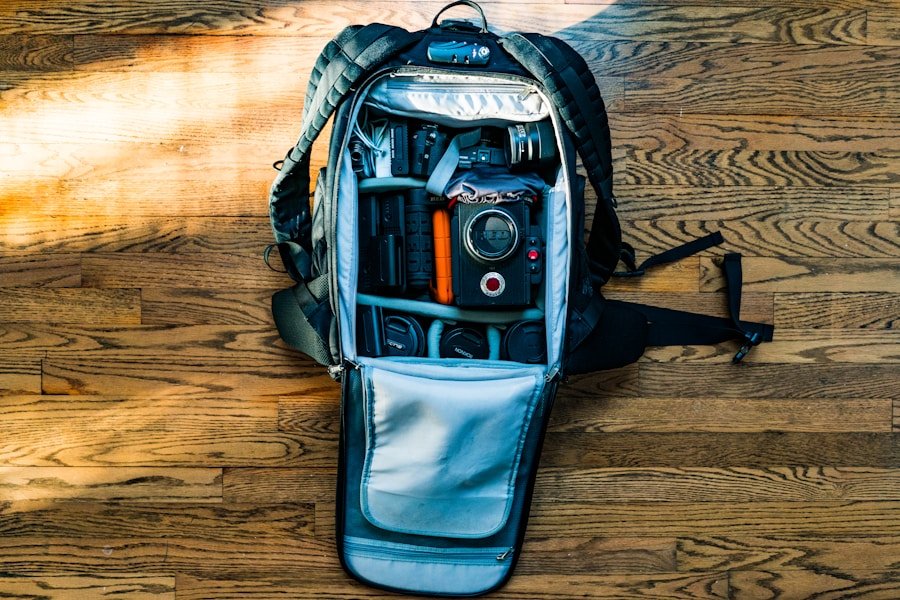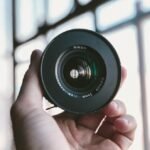Street photography is a unique and captivating form of art that captures the essence of everyday life in urban environments. It is a genre that requires a keen eye for detail, an understanding of composition, and the ability to capture fleeting moments in time. Street photographers often roam the streets, observing and documenting the world around them, seeking to capture the beauty, chaos, and humanity of city life. The genre has a rich history, with iconic photographers such as Henri Cartier-Bresson, Daido Moriyama, and Garry Winogrand paving the way for contemporary street photographers. Whether it’s the hustle and bustle of a busy city street, the quiet moments in a neighborhood park, or the vibrant energy of a street festival, street photography offers a glimpse into the diverse and dynamic tapestry of urban life.
Camera: The Most Important Tool
The camera is the most essential tool for any street photographer. It is the instrument through which they capture the world around them, freezing moments in time and preserving them for posterity. When it comes to choosing a camera for street photography, there are a few key factors to consider. Firstly, portability is crucial, as street photographers often need to be nimble and quick on their feet. A compact and lightweight camera that can be easily carried around all day is ideal. Additionally, a camera with fast autofocus and responsive controls is essential for capturing fleeting moments on the go. Many street photographers opt for mirrorless or rangefinder cameras for their compact size and discreet appearance, allowing them to blend into the urban landscape without drawing attention to themselves.
Prime Lens: Capturing the Moment
A prime lens is a popular choice among street photographers for its simplicity, versatility, and superior image quality. Unlike zoom lenses, which offer a range of focal lengths, a prime lens has a fixed focal length, requiring the photographer to physically move closer or further away from their subject to compose their shot. This forces the photographer to be more intentional and deliberate in their approach, resulting in more thoughtfully composed images. Prime lenses also tend to have wider apertures, allowing for better low-light performance and the ability to create beautiful background blur, or bokeh, which can help isolate subjects from distracting backgrounds. Common focal lengths for street photography include 35mm and 50mm, which offer a natural field of view similar to what the human eye sees, making them well-suited for capturing candid moments in urban environments.
Tripod: Stability for Long Exposure Shots
While street photography is often associated with capturing spontaneous moments on the go, some photographers also enjoy experimenting with long exposure shots to create unique and dynamic images. Long exposure photography involves using a slow shutter speed to capture motion blur, light trails, or other creative effects. In order to achieve sharp and steady long exposure shots, a tripod is an essential piece of equipment. A sturdy and lightweight tripod can provide stability and support for the camera, allowing the photographer to keep it perfectly still during long exposures. Some tripods also feature adjustable legs and ball heads, which can be useful for achieving different angles and perspectives when shooting in urban environments. While tripods may not be necessary for every street photography situation, they can be a valuable tool for photographers looking to experiment with long exposure techniques.
External Flash: Illuminating the Scene
Lighting is a crucial element in photography, and street photography is no exception. While natural light is often preferred for its authenticity and mood-setting qualities, there are times when additional lighting is necessary to illuminate a scene or fill in shadows. An external flash can be a valuable tool for street photographers looking to control and enhance the lighting in their images. Whether it’s adding a pop of light to a subject’s face in low-light conditions or creating dramatic lighting effects in nighttime scenes, an external flash can provide versatility and creative control. Some street photographers also use off-camera flash techniques to create dynamic and visually striking images that stand out from the crowd. When choosing an external flash for street photography, it’s important to consider factors such as size, power output, and compatibility with your camera system.
Light Meter: Ensuring Proper Exposure
Exposure is a fundamental aspect of photography, and achieving proper exposure is essential for creating well-balanced and visually appealing images. While many modern cameras have built-in light meters that can accurately measure light levels and assist with exposure settings, some street photographers prefer to use handheld light meters for greater precision and control. A handheld light meter allows the photographer to measure light levels in specific areas of a scene, helping them make informed decisions about aperture, shutter speed, and ISO settings to achieve the desired exposure. This can be particularly useful in challenging lighting situations where the camera’s built-in meter may struggle to accurately gauge exposure. Additionally, using a handheld light meter can help photographers develop a deeper understanding of light and exposure, leading to more consistent and technically proficient images.
Camera Bag: Keeping Your Gear Safe and Organized
A reliable camera bag is an essential accessory for any street photographer looking to keep their gear safe, organized, and easily accessible while on the move. When it comes to choosing a camera bag for street photography, there are several factors to consider. Firstly, durability is key – a well-made bag with sturdy construction and ample padding can help protect expensive camera equipment from bumps, drops, and adverse weather conditions. Additionally, comfort is important, especially for photographers who spend long hours walking and shooting on the streets. Look for a bag with adjustable straps, breathable padding, and ergonomic design features that make it comfortable to carry for extended periods of time. Finally, consider the bag’s capacity and organization options – it should have enough space to accommodate your camera body, lenses, accessories, and personal items, as well as compartments and pockets to keep everything neatly organized and easily accessible. With the right camera bag by your side, you can focus on capturing compelling images without having to worry about the safety and security of your gear.








